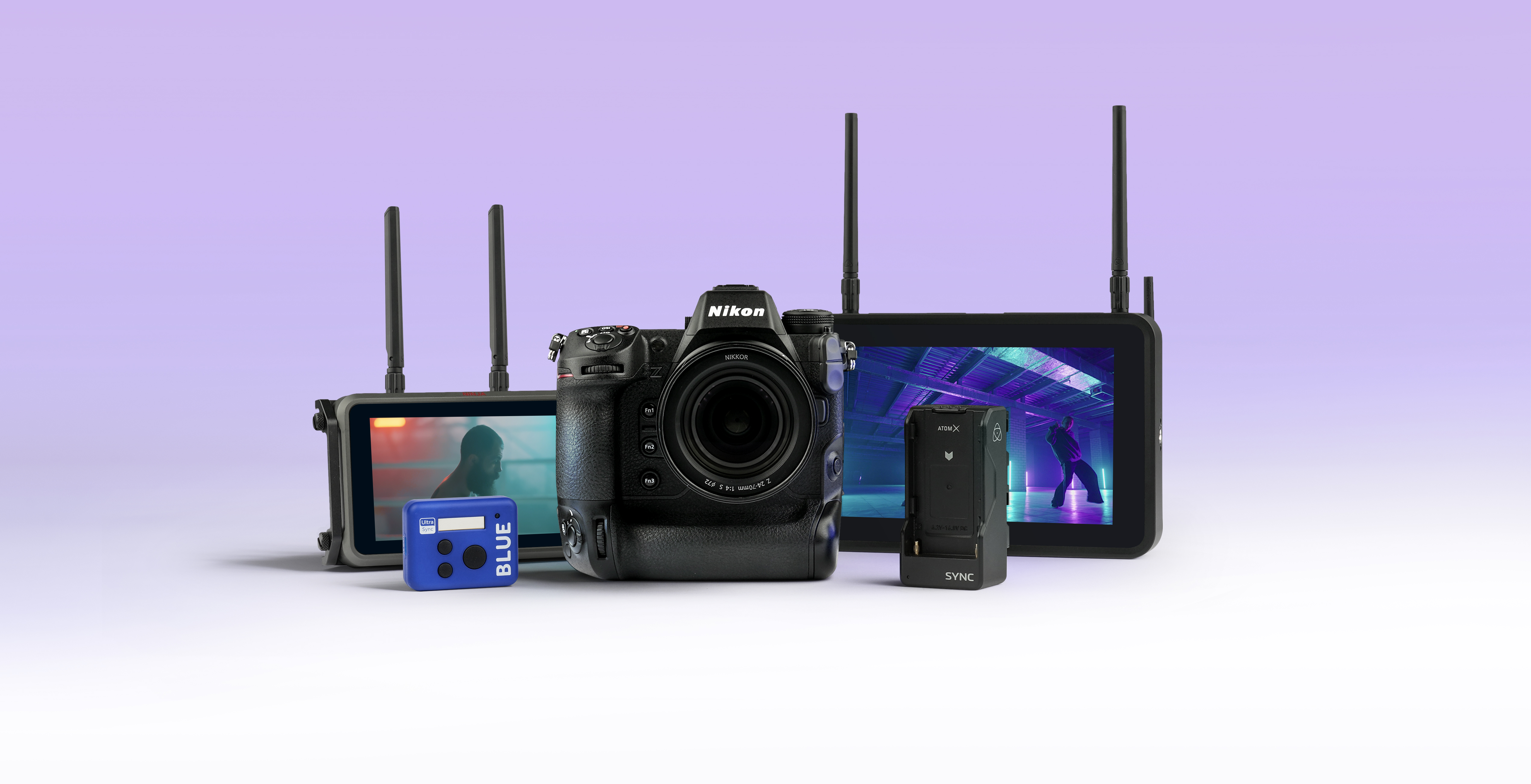Nikon Z9 Adds Support for Atomos AirGlu Sync Technology
Firmware update allows Nikon’s Z9 to synchronize timecode accurately and wirelessly over Bluetooth (BT) with a range of compatible devices and software applications

MELBOURNE, Australia—Nikon has released a firmware update for its flagship mirrorless Nikon Z9 camera that adds support for Atomos AirGlu BT.
The Nikon Z9 3.0 firmware update, which offers 20 features for video and photography, includes capabilities that allow the Z9 to synchronize timecode accurately and wirelessly over Bluetooth (BT) with a range of compatible devices and software applications.
This collaboration between Nikon and Atomos breaks new ground by further expanding the appeal of Nikon’s flagship camera to video producers and by creating a new category within the Atomos ecosystem for the Z9.
“Our partnership with Nikon demonstrates our commitment at Atomos to innovate and solve all manner of technical challenges faced by filmmakers,” explained Trevor Elbourne, CEO Atomos. “Even when a camera can record video internally, Atomos can add value by connecting devices and in this case, providing wireless timecode sync. This patented wireless technology was developed with just this scenario in mind, and we’re really pleased to find a new home for the Z9 within the expanding Atomos ecosystem.”
The Z9, which offers 8K video recording, is powered by an advanced 45.7 megapixel stacked CMOS sensor and the next generation EXPEED 7 image processing engine. It features an electronic shutter and an advanced auto-focus system that uses a subject detection algorithm developed with deep-learning technology, as well as 3D-tracking.
UltraSync BLUE is the first product to synchronize timecode using Atomos AirGlu BT technology to an expanding range of compatible cameras, audio recorders, and applications. Once the devices are connected, timecode is transmitted wirelessly from the UltraSync BLUE and embedded into the media files each generates, Atomos reported.
Removing the restrictions of a wired connection creates convenience and extra versatility, the company stressed. Use the Atomos UltraSync BLUE as the server to wirelessly synchronise timecode over BT for up to 6 Nikon Z9 cameras and a range of compatible devices including dedicated audio recorders from Zoom and Tascam, or apps including UltraSync BLUE Slate, MovieSlate 8, MAVIS Pro Camera, Apogee MetaRecorder, Softron MovieRecorder, and Softron Multicam Logger.
The Atomos AirGlu system was developed by Timecode Systems and provides accurate, easy-to-use sync for every production. The ability to lock cameras together and support dual system recording with separate audio devices, is incredibly important and streamlines post workflows.
AirGlu™ BT is the wireless technology for synchronizing timecode over Bluetooth for devices in relatively close proximity.
AirGlu RF (Radio Frequency) offers a long-range option and is the wireless technology for synchronizing timecode over wider distances. Both wireless networks are designed to work seamlessly together to support different devices operating together and create maximum flexibility for each production. The UltraSync BLUE, UltraSync One, AtomX SYNC, Atomos CONNECT for NINJA V and NINJA V+, and SHOGUN CONNECT all sync and communicate using AirGlu RF, while simultaneously and independently acting as an AirGlu BT hotspot for local devices and apps. With each server able to support up to 6 BT devices, the ability to dynamically scale the system is significant.
Atomos has created an OEM Atomos AirGlu Module for third-party manufacturers. The AirGlu 2 module supports both BT and RF and the AirGlu 3 module supports RF only. AirGlu 2 is the implementation Atomos uses in the CONNECT range of products. AirGlu 3 is intended for third-party devices that already include BT support.
Get the TV Tech Newsletter
The professional video industry's #1 source for news, trends and product and tech information. Sign up below.
George Winslow is the senior content producer for TV Tech. He has written about the television, media and technology industries for nearly 30 years for such publications as Broadcasting & Cable, Multichannel News and TV Tech. Over the years, he has edited a number of magazines, including Multichannel News International and World Screen, and moderated panels at such major industry events as NAB and MIP TV. He has published two books and dozens of encyclopedia articles on such subjects as the media, New York City history and economics.

